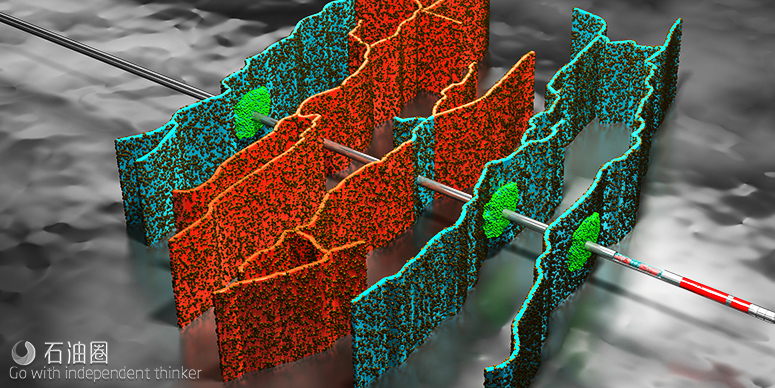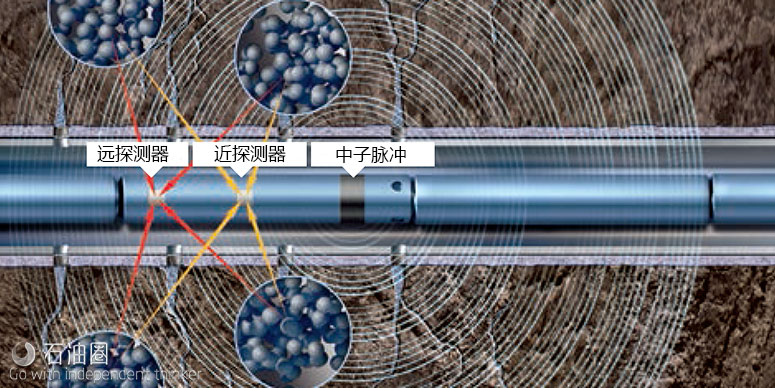CARBONRT inert tracer technology enables the high definition evaluation of fractures in ceramic completed wells to help you optimize completion efficiency, production and field development.
Our unique tracer technology enables the direct measurement of near-wellbore proppant location and quantity using our FRACTUREVISION proppant-delivered fracture evaluation service.
Optimize ceramic completed well production with high definition fracture measurement
CARBONRT inert tracer technology enables the high definition evaluation of fractures in ceramic completed wells to help you optimize completion efficiency, production and field development. Our unique tracer technology enables the direct measurement of near-wellbore proppant location and quantity using our FRACTUREVISION? proppant-delivered fracture evaluation service. The accurate measurements from the service allow the evaluation of perforation cluster efficiency and near-wellbore connectivity, which can be used to maximize estimated ultimate recovery (EUR). A precise understanding of proppant placement also supports the optimization of stage placement and proppant diversion.
Uniform tracer distribution for accurate measurements
CARBONRT technology is a proppant that is manufactured with a proprietary tracer uniformly distributed throughout each proppant grain. This assures consistent distribution of the tracer throughout the near-wellbore fracture zone, enabling more accurate measurement of proppant coverage and propped fracture height. As the tracer is integral to the proppant matrix it cannot be dissolved or washed away.
High quality measurements anytime with standard tools
Our unique technology features an inert traceable material that has a high neutron capture cross section which is detectable with a standard, cost-effective neutron logging tool run. This makes the result a direct measurement of where proppant is located, rather than an interpretation.
Determine propped fracture coverage and improve perforation efficiency
After fracturing it is critical to determine whether all zones have been stimulated as planned. If a particular zone is not producing, it is important to understand whether it is due to a poor reservoir quality or poor stimulation.
CARBONRT technology can be used to evaluate how many perforations have taken proppant and been successfully stimulated in horizontal wells. By varying the number of perforation clusters in each interval, perforation cluster efficiency can be evaluated and adjusted to achieve optimal perforation spacing.
The evaluation of perforations with our technology can be used to develop an understanding of duning effects that can negatively impact proppant placement and recovery from the reservoir, and to verify the success of diversion operations.
Understand near-wellbore connectivity to avoid overflushing
The flow of hydrocarbons into the wellbore is only possible if the wellbore is connected to the reservoir. The volume of near-wellbore proppant to a large extent, determines how much production is possible from the reservoir. CARBONRT technology can measure the amount of proppant that is near the wellbore to provide you with an understanding of your near-wellbore connectivity.
Identify optimal stage spacing
In both vertical and horizontal wells, CARBONRT technology can be used to pinpoint propped stage intervals and confirm successful stimulation. This information can then be used to identify optimal stage spacing and any potential zones for re-stimulation.
Increase fracture geometry modeling accuracy
Fracture analysis models are often constrained by the lack or quality of the measurements available. Pressure curves and measurements of pumped proppant volumes can be recorded during stimulation. When combined with propped fracture height and open perforations, measurements obtained with CARBONRT technology can enhance the quality of your fracture simulator model and analysis which results in improved fracture treatment designs and stimulation efficiency.
Fracture height is used to calibrate the stresses above and below the formation, and, when used in conjunction with a fracture model, can give an indication of hydraulic fracture geometry. When the actual propped fracture height is known, fracture models can be calibrated with more certainty so that future designs can be modified to provide the optimal drainage from the reservoir.
Develop integrated solutions to calibrate propped fracture network and SRV models
The integration of proppant placement measurements obtained using CARBONRT technology with diagnostic technologies such as microseismic, distributed temperature sensing, distributed acoustic sensing and production logs creates an integrated solution that enables you to calibrate your fracture network and SRV models. The model calibration enables you to calculate the propped fracture network and propped SRV.
Only CARBONRT technology tracks proppant location which makes it an integral part of an integrated solution to understand where your treatment went and more importantly, why.
Features
1.Inert, permanent tracer that is safe and environmentally friendly—no special equipment, handling, permits or licenses required
2.Uniform distribution of tracer within each proppant grain—not a coating—can be manufactured into any CARBO ceramic proppant
3.Detected using standard neutron logging tools run at standard speeds
Benefits
1.Cost-effective fracture evaluation in vertical and horizontal ceramic completed wells ? Identifies the proppant coverage (stimulated interval) as well as propped fracture height
2.Tracks the amount of proppant near the wellbore so you can understand near-wellbore connectivity and perforation efficiency
3.Enables measurements to enhance fracture simulation models, treatment designs and completion efficiency
Case Study
The challenge
To help optimize completion designs for future multi-stage development wells, the operator first needed to determine the fracture height in a single zone hydraulicallyfractured conventional exploration well. Combining post-stimulation fracture height with corresponding pressure match data would enable the operator to identify coverage of the stimulated interval, calibrate fracture models, and accurately estimate fracture conductivity. In the past, radioactive tracers would be incorporated in the proppant slurry and detected with a conventional spectral gamma ray tool. However, tightening environmental regulations in offshore West Africa restrict the use of radioactive tracers, thereby mandating an HSE-acceptable alternative.
The solution
That alternative came in the form of the CARBONRT inert tracer technology, the enabling component of the CARBO exclusive FRACTUREVISION proppant-delivered fracture evaluation service. Together with the CARBONRT tracer, a Pulsed Neutron Capture (PNC) tool was deployed pre- and post-fracturing operations to identify the location of the proppant and measure near-wellbore fracture height. The strategy considered utilizing FRACPRO fracture design and analysis software to pressure match fracture treatment data to derive fracture height, thereby comparing the predicted and measured heights, and determining correlations to further calibrate the fracture model.
The results
CARBONRT tracer signals were clearly observed, with the post-stimulation PNC logs measuring a propped fracture height of 43.6 m, as opposed to the nearly 64.2 m modeled height growth, which seemed an over-estimation from the pressure match simulation. The propped fracture height obtained from the PNC logs was deemed far more accurate, as it represents a direct measurement of proppant placement in the near-wellbore region. The combination of CARBONRT inert tracer technology and the PNC tool yielded considerable insight that will advance full-field development, without the safety and environmental issues associated with radioactive tracers.

 石油圈
石油圈

